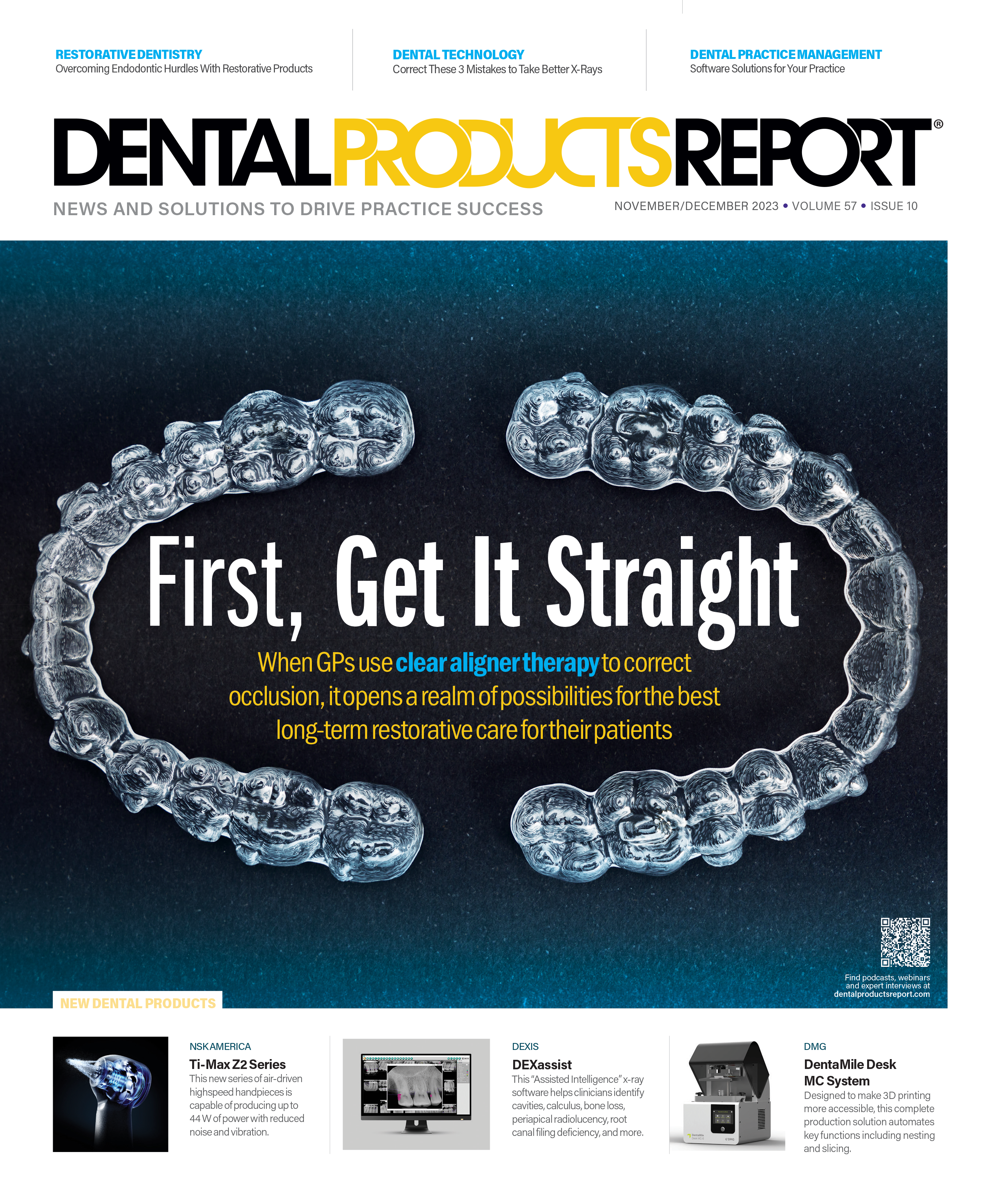Artificial Intelligence: The New Normal for Hygienists
As the dental industry grapples with the technological advancement of artificial intelligence, dental practice insight expert Sami Jo Strickland discusses the impact it could have on dental hygiene.
Artificial Intelligence: The New Normal for Hygienists. Image credit: © HBS - stock.adobe.com

Over the past decade, technologies available to hygienists have advanced dramatically. With the introduction of tools like digital dental assistants and 3D scanners, day-to-day operations have evolved alongside the technology—streamlining administrative and clinical processes, improving employee satisfaction, and enhancing the patient experience. While the time that goes into learning the new systems may at first be lengthy, the efficiencies gained have benefits for hygienists, patients, and businesses alike. Embracing new cutting-edge innovations is a short-term investment for long-term solutions and results.
Working Smarter
The introduction of artificial intelligence (AI)-enabled tools has decreased the amount of time hygienists are spending on day-to-day administrative tasks. For example, instead of requiring dental assistants to transcribe a patient’s periodontal information into a chart or to complete the process themselves, potentially introducing cross-contamination risks for those going between gloves and keyboards, technology has significantly streamlined the periodontal charting process. When implemented appropriately, innovative clinical technology can improve the patient experience and allow providers to focus more on patient care. This is just one of the many ways that Aspen Dental® removes the stresses and tedious administrative tasks that often automatically come with running a dental practice, so clinicians can fully focus on addressing a patient’s issue.
AI-enabled tools like the digital dental assistant, currently in use at many Aspen Dental locations, allow hygienists to issue vocal commands that are then translated by an AI virtual assistant into updates in a patient’s periodontal chart. The voice-activated periodontal charting solution was designed as an intelligent layer between the provider and the management system that allows for more clinically sound workflows and seamless digital documentation. The technology not only enhances the efficiency of dental processes but also ensures greater accuracy in patient recordkeeping. By reducing the reliance on manual data entry, AI-driven solutions help minimize the risk of error and streamline administrative tasks, which has benefits for patients and hygienists.
Better Patient Engagement
Voice-activated periodontal charting is not the only technology that has changed the hygiene workflow in recent years. Intraoral scanning has also dramatically improved hygienists’ day-to-day work. At Aspen Dental locations, all patients are scanned prior to treatment. Not only do intraoral scans help hygienists better educate patients, but they also increase patient acceptance when it comes to treatment. Seeing is believing, and scans help explain through imagery what might otherwise be difficult to follow during a case presentation.
On top of the educational benefits for patients, the scanning technology improves the accuracy and completeness of clinical records, strengthens risk and compliance, and allows more time and attention to be spent with patients. While some private practices do still regularly use more traditional practices like dip X-rays, Aspen Dental sees intraoral scans as a mainstay for the industry. When hygienists are able to quickly show their patients the numbers on their periodontal charts, they get more buy-in. More buy-in from patients benefits hygienists and dentists because it means patients are more likely to listen and trust their providers.
The time saved from going between screens and charts for hygienists means they are more present with their patients in the chair. The more present a hygienist can be with their patient, the more engagement they’re likely to get from them. Building the connection between the patients and the dental professionals responsible for their oral care is what sets apart a good care specialist from a great one. Engaging in conversation and being personable encourages patients to ask more questions, so providers can gain more insight into how to best tend to each patient’s needs and lifestyle. This humanized approach to dental care through technological integration places a strong emphasis on empathy, communication, and personalized care, recognizing that a patient’s emotional and psychological well-being is as important as their oral health. Moreover, technology serves as a catalyst for changing how dentists, hygienists, and other professionals alike can treat patients with the compassion and respect they deserve.
Looking Ahead
Staying ahead of the latest technologies is a high priority for Aspen Dental hygienists and is easily enabled because of the unique dental support organization model that Aspen offers providers. Hygienists are on the front lines of new technology, acting as the initial party who can accept new advancements and incorporate them into everyday hygienist processes. Ensuring these essential members of each practice are supported is paramount to providing patients with quality care.
Through train-the-trainer programs and continuing education courses, Aspen Dental’s hygienists are among the first to know and the first to train on emerging tools. The use of 3D scanners for dentures is another example of how Aspen Dental is integrating the latest technologies into its practices and leading the way when it comes to expanding access to care more broadly.
As technology in the industry continues to advance, hygienists will continue to find ways to work alongside these advancements and reimagine what the patient care experience can be.
